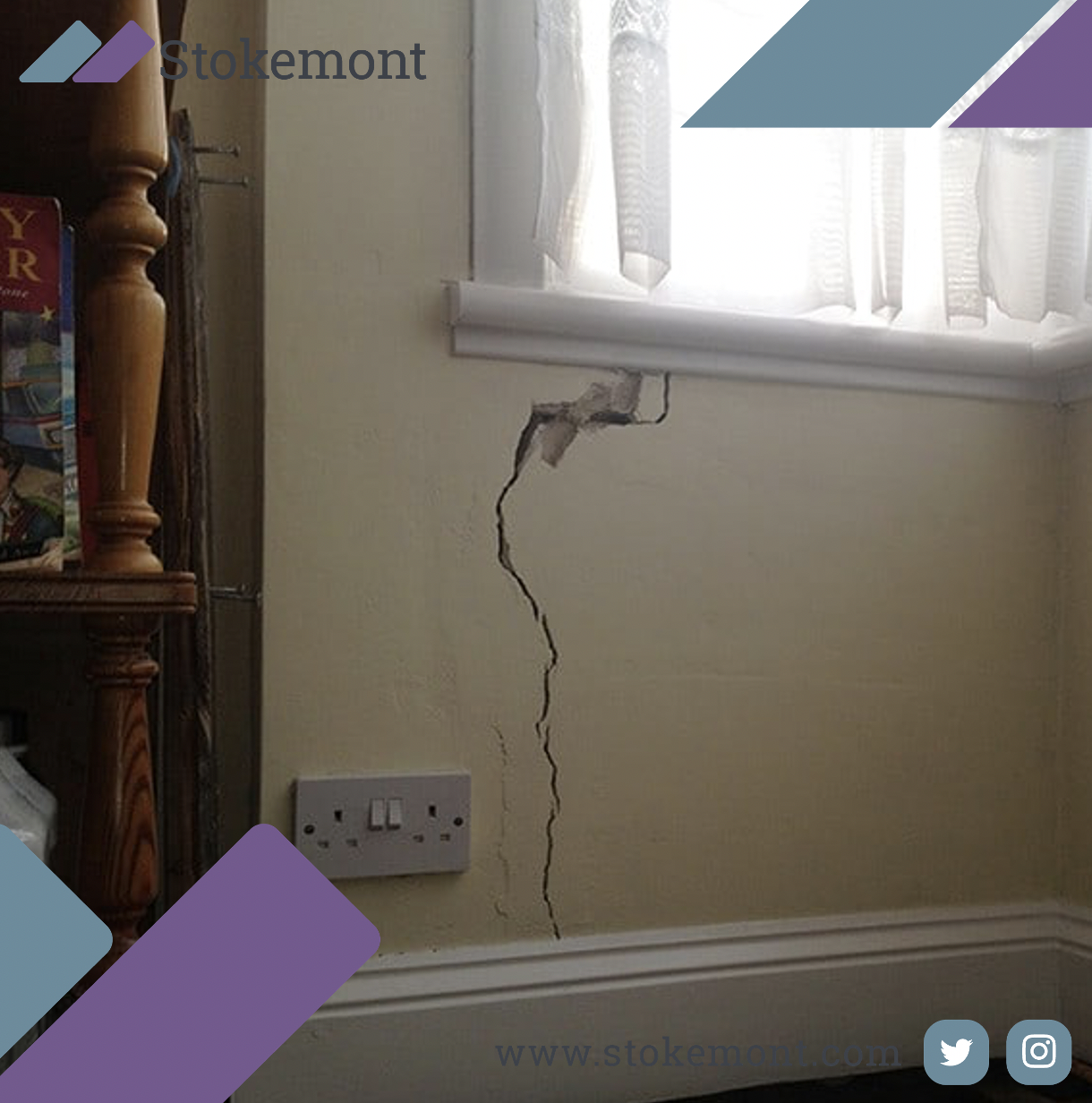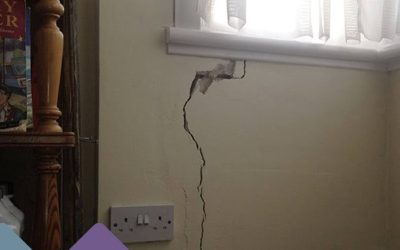Thank you, for clicking on today’s Property Surveying blogpost, today we are going to be discussing pre-purchase surveys, including RICS Homebuyer Reports and full Building Surveys. Equally, we will discuss Defect Analysis Reports.
As the seasons change, property issues and typical problems will change along with them.
While it might be in the colder season at the time of this blogpost being published, we thought we would give you some insight into what to expect in the coming months, and when the weather turns towards the warmer and hotter end of the spectrum.
One of the biggest issues that properties face in the summer months, is the changing temperature. This will result in issues that may have gone unnoticed in the winter cold months.
Subsidence
Subsidence is one of the most typical defects in both the winter and summer months, or colder and hotter months.
However, in particularly warm weather, as the vast majority of London is built on a clay belt, the ground will become significantly firm, as there is a general lack of moisture and water resulting from rain.
This can result in the ground shrinking, meaning that properties of older type, circa 1900s-1930s, are likely to suffer from some form of subsidence or movement.
To put this into perspective, the summer of 2022 was exceptionally hot.
As a result of this, subsidence that may have been dormant for years, quickly reared its head to properties, resulting in bay window movement, or movement and the inevitable cracking that can come with it.
The solutions to rectify and remedy subsidence tend to be as follows:
Underpinning
Underpinning is one of the most typical ways to deal with shallow foundations and footings. Effectively, the underside of the footing or foundation will be excavated, in its place the installation of concrete will occur.
This concrete adding or extending to the depth of the foundational footing, while also giving it a firm base or ground to gain support from.
Underpinning is by no means a cheap endeavour, as a general rule of thumb, underpinning can cost anywhere from £2,500 per linear meter.
Structural Stitching
Another means to rectifying cracking is structural stitching.
This tends to be similar to conventional stitching, albeit metal rods will be cut into external walls and glued or bedded in place.
The aim being that these metal rods hold the two sides of the respective crack together, stopping further or ongoing movement.
Again, structural stitching is by no means cheap or straightforward.
It is likely going to need the input of a structural engineer, and an experienced contractor to design it.
Invasive Plants
Naturally, in the colder months, plants are going to have less growth. However, when the weather warms up, plants will get more UV rays, and as a result will often grow significantly.
A typical invasive plant that wreaks havoc throughout London and Wales is Japanese Knotweed.
Japanese Knotweed is considered to be a controlled waste, and the biggest risk it poses is that it can disrupt the property foundations to which it is growing in close proximity to.
It is also worth noting, that the cost to rectify and remove Japanese Knotweed is incredibly high.
There is also very rarely a 100% guarantee that the entirety of the Japanese Knotweed can be addressed in a single sitting.
Instead, it is likely that the Japanese Knotweed removal specialist is going to need to visit over an extended period of time, either injecting stems or spraying pesticides on the affected area.
Surprisingly, Japanese Knotweed also has the knock-on effect of putting mortgage lenders off, mainly because they are akin and aware of the difficulty of its removal and the associated costs that can come with that.
If you have Japanese Knotweed within your property, we would advise that this is addressed as soon as possible, as the longer it is left, the more mature the Knotweed will become, and the more difficult it is to eradicate.
Pests
In the hotter months, pests are going to become more active.
This is particularly the case for wasps.Wasps will find their way into loft and roof spaces with the utmost ease.
Their nests are often as small as golf balls, however we have seen them as large as bowling balls.
If you are unlucky enough to have wasps in your loft or roof space, you will need to get a pest specialist out at the first instance to eradicate the nest.
Typical signs of wasps within the roof space or loft will be the sound of wasps buzzing around, or alternatively you may find dead wasps littered throughout the roof space itself.
Wasps pose a particular issue, as if they are disturbed, they are likely to sting any person who is within the loft space or roof space.
Certainly, over the years it has not been uncommon for our surveyors to come back to site reporting stings from wasps.
Unfortunately, it is just one of those normalities that being a building surveyor presents.
A small peace of mind for property owners, is that wasps will only use the nest once. Therefore, eradicating them is a seasonal issue.
The best way to get rid of wasps is to seal up open gaps and holes in roof spaces and lofts, thereby stopping them from gaining access and entry to the area in the first place.
Over the years, here at Stokemont, we have seen all types of defects and issues, and have worked in all types of weather, from snow to severe heat.
This not only gives us incredible experience, but it also ensures that when a defect is found, our surveyors are well-placed to advise on the best course of rectification and remedy.
If you would like to discuss RICS Homebuyer Reports, Full Building Surveys, or Defect Analysis Reports with our team of experienced and qualified building surveyors, please feel free to contact us today, and we will be more than happy to assist and advise you.




